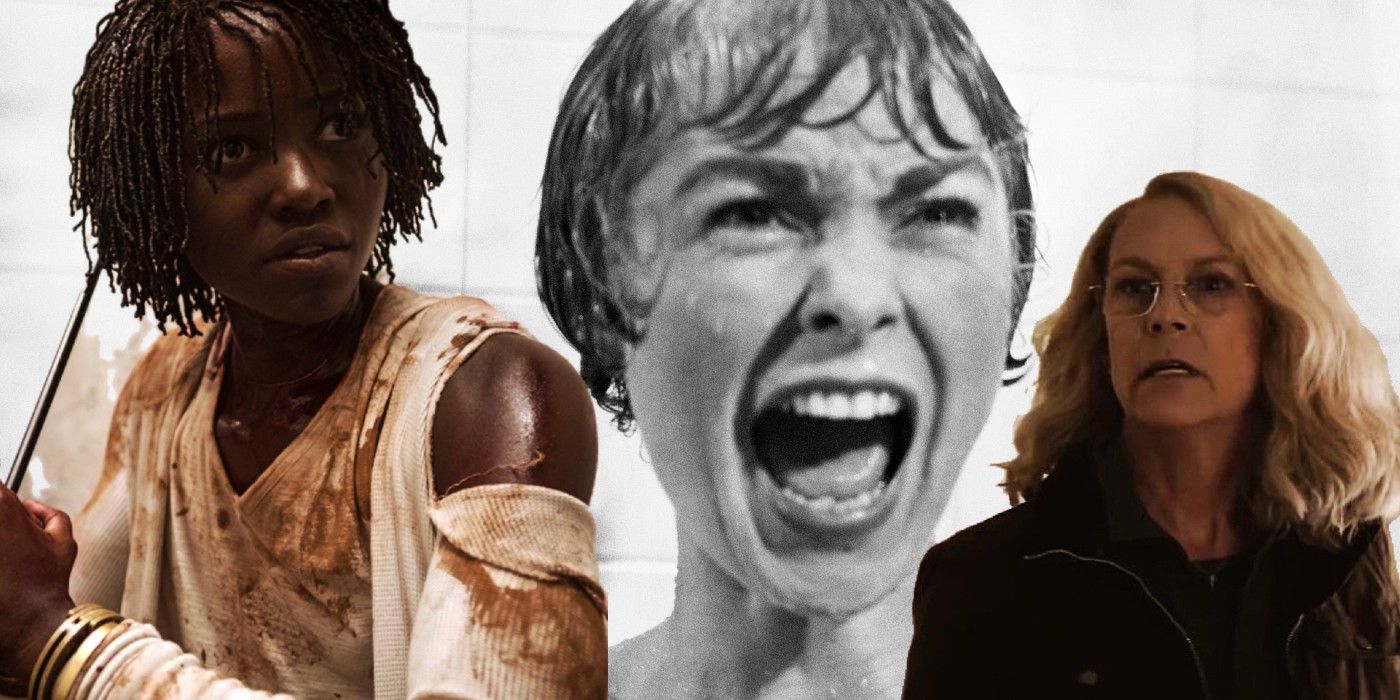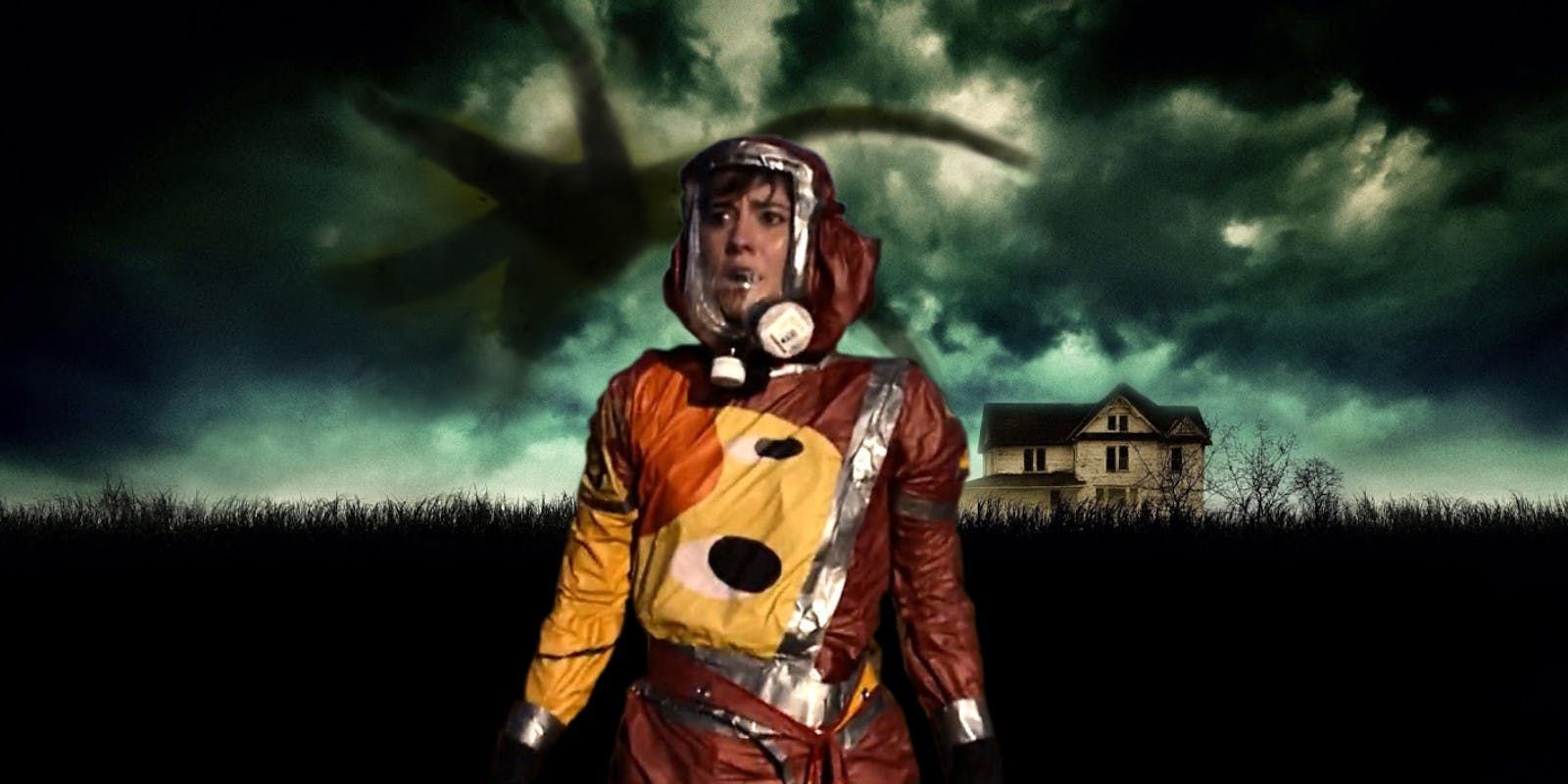Modern horror movies have rescued women from Hitchcock's hysteria. In early cinema, when a female character appeared in a horror movie, they were usually subject to a "damsel in distress" role, portrayed as hysterical victims. They were also usually written in to be objects of the creatures' or killers' desires, who desperately needed male heroes to intervene and save their lives.
Many classic Alfred Hitchcock thrillers, in particular, portrayed women in this fashion. The women in these movies were meant to be put in danger. They would either have to be rescued or suffer death, and they always had to appear beautiful while doing so. Hitchcock's damsels included, among others, Margot, played by Grace Kelly in 1954's Dial M for Murder; Marion, played by Janet Leigh in 1960's Psycho; Miriam, played by Kasey Rogers in 1951's Strangers On A Train; and Melanie, played by Tippi Hedren in 1963's The Birds.
Damsels in distress can also be found in other early movies across the horror genre, including classic creature features. Examples include Helen Chandler's role as Mina in 1931's Dracula and Mae Clarke's role as Elizabeth in the same year's Frankenstein, though, of course, both of these movies were based upon books. Julie Adams famously played the damsel in distress, Kay, in 1954's Creature from the Black Lagoon and Evelyn Ankers played one as Gwen in 1941's The Wolfman, which is reportedly getting a remake.
Modern cinema has fortunately changed the image of women in horror movies. With the 1970s and 1980s came slasher movies like Halloween, Friday the 13th, and A Nightmare on Elm Street. These movies—and the franchises they spawned—explored women as the leading characters, known as final girls, who save the day. The final girl trope has its own problems, though. Usually, the last girl standing is virginal with a conservative lifestyle, while her friends who experiment with drugs or are sexually promiscuous are killed. The 1996 movie Scream notably attempted to turn this trope on its head. Halloween's later sequels mostly fixed its final girl problem, with each installment giving Laurie Strode a richer backstory. The 2018 sequel avoided stereotypes around women altogether by providing three strong female leads with Laurie, her daughter, and her granddaughter.
The final girl issue aside, the modern horror space has certainly improved in terms of the representation of women. Horror, unlike action and thriller genres, is no longer a male-centric space. Modern horror movies more often feature women in leading roles and, especially as of late, they don't typically relegate women to cliches, as has been done in other genres, such as romantic comedy movies.
Not only do horror movies frequently feature women in leading roles, but those roles are usually strong characters who have fully realized backstories. Florence Pugh played Dani in 2019's Midsommar, Lupita Nyong'o played Adelaide in 2019's Us, Elizabeth Moss played Cecilia in 2020's The Invisible Man, and Janelle Monáe played Veronica in 2020's Antebellum. In each of these examples, the leading woman has a full background and complex emotions. She also doesn't rely upon male characters to save her from danger. These characters try their hardest to save themselves, like Mary Elizabeth Winstead's Michelle in 10 Cloverfield Lane. She seems to be a damsel, kidnapped and kept hostage, but escapes her situation on her own. The same can be said about Samara Weaving's Grace in 2019's Ready Or Not.
Most modern horror movies even end up passing the Bechdel Test, which states that, in a movie, there must be at least two female characters who have a conversation with each other about a topic other than a man. Most old horror classics—Hitchcock's among them—completely fail this simple test by usually having only one women present in the film. In 2020, horror movies usually feature numerous female characters; they actually have more screen time and dialogue than the male characters.
While damsels in distress do occasionally still appear in horror movies, overall, the horror genre has come a long way for women in recent decades. Unfortunate tropes like the hysterical damsel in distress are usually avoided, with screenwriters and directors working hard to make their female characters unique and strong. Hopefully, the increasing presence of female filmmakers in the industry will only improve the representation of women in horror.


